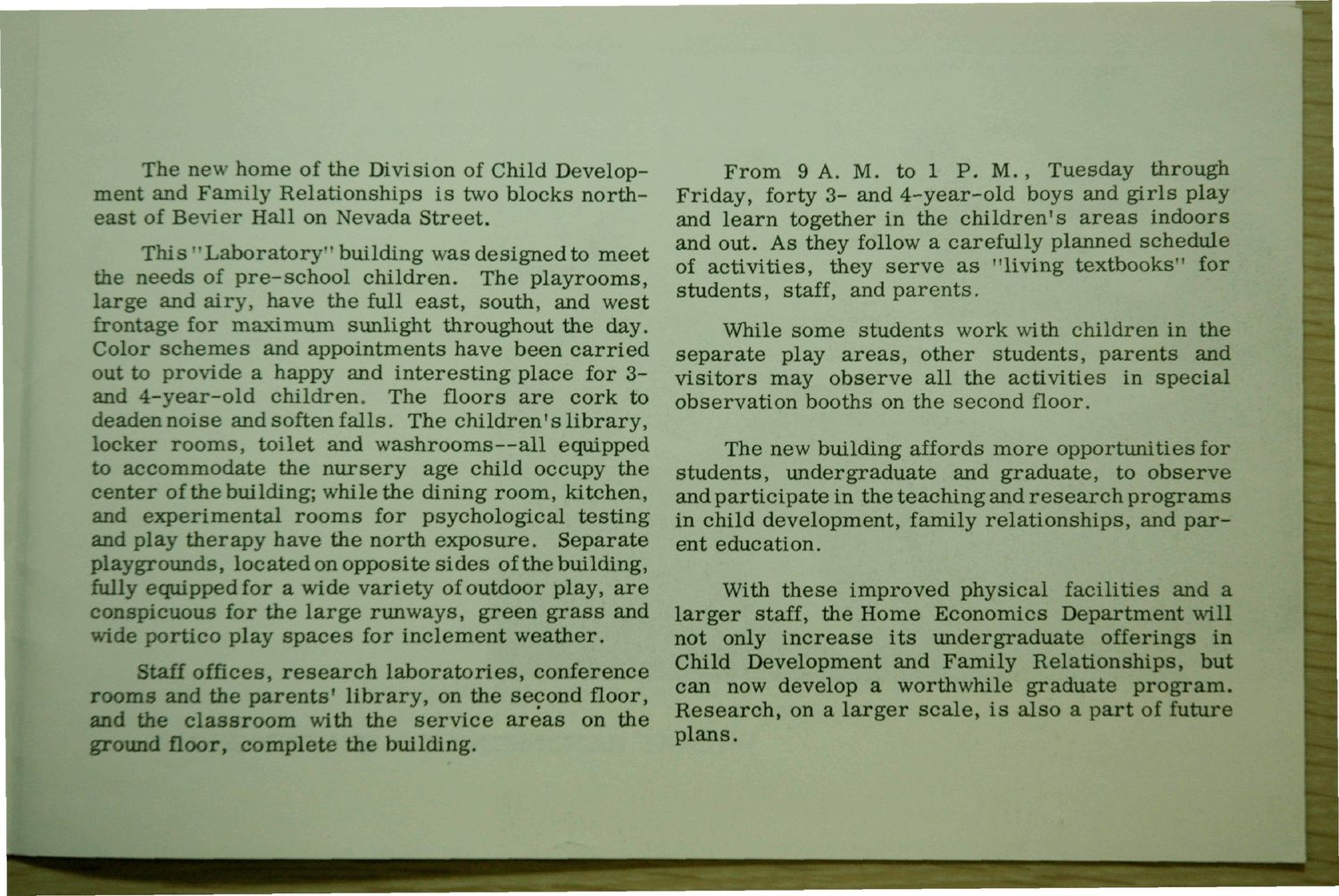| |
| |
Caption: Dedication - Home Economics
This is a reduced-resolution page image for fast online browsing.

EXTRACTED TEXT FROM PAGE:
The new home of the Division of Child Development and Family Relationships is two blocks northeast of Bevier Hall on Nevada Street. This "Laboratory" building was designed to meet the needs of pre-school children. The playrooms, large and airy, have the full east, south, and west frontage for maximum sunlight throughout the day. Color schemes and appointments have been carried out to provide a happy and interesting place for 3and 4-year-old children. The floors are cork to deaden noise and soften falls. The children's library, locker rooms, toilet and washrooms—all equipped to accommodate the nursery age child occupy the center of the building; while the dining room, kitchen, and experimental rooms for psychological testing and play therapy have the north exposure. Separate playgrounds, located on opposite sides of the building, fully equipped for a wide variety of outdoor play, a r e conspicuous for the large runways, green grass and wide portico play spaces for inclement weather. Staff offices, r e s e a r c h laboratories, conference rooms and the parents' library, on the second floor, and the classroom with the service areas on the ground floor, complete the building. From 9 A . M . to 1 P* M . , Tuesday through Friday, forty 3 - and 4-year-old boys and girls play and learn together in the children's areas indoors and out. As they follow a carefully planned schedule of activities, they serve a s "living textbooks" for students, staff, and parents. While some students work with children in the separate play areas, other students, parents and visitors may observe all the activities in special observation booths on the second floor. The new building affords more opportunities for students, undergraduate and graduate, to observe and participate in the teaching and research programs in child development, family relationships, and p a r ent education. With these improved physical facilities and a larger staff, the Home Economics Department will not only increase its undergraduate offerings in Child Development and Family Relationships, but can now develop a worthwhile graduate program. Research, on a larger scale, is also a part of future plans.
| |